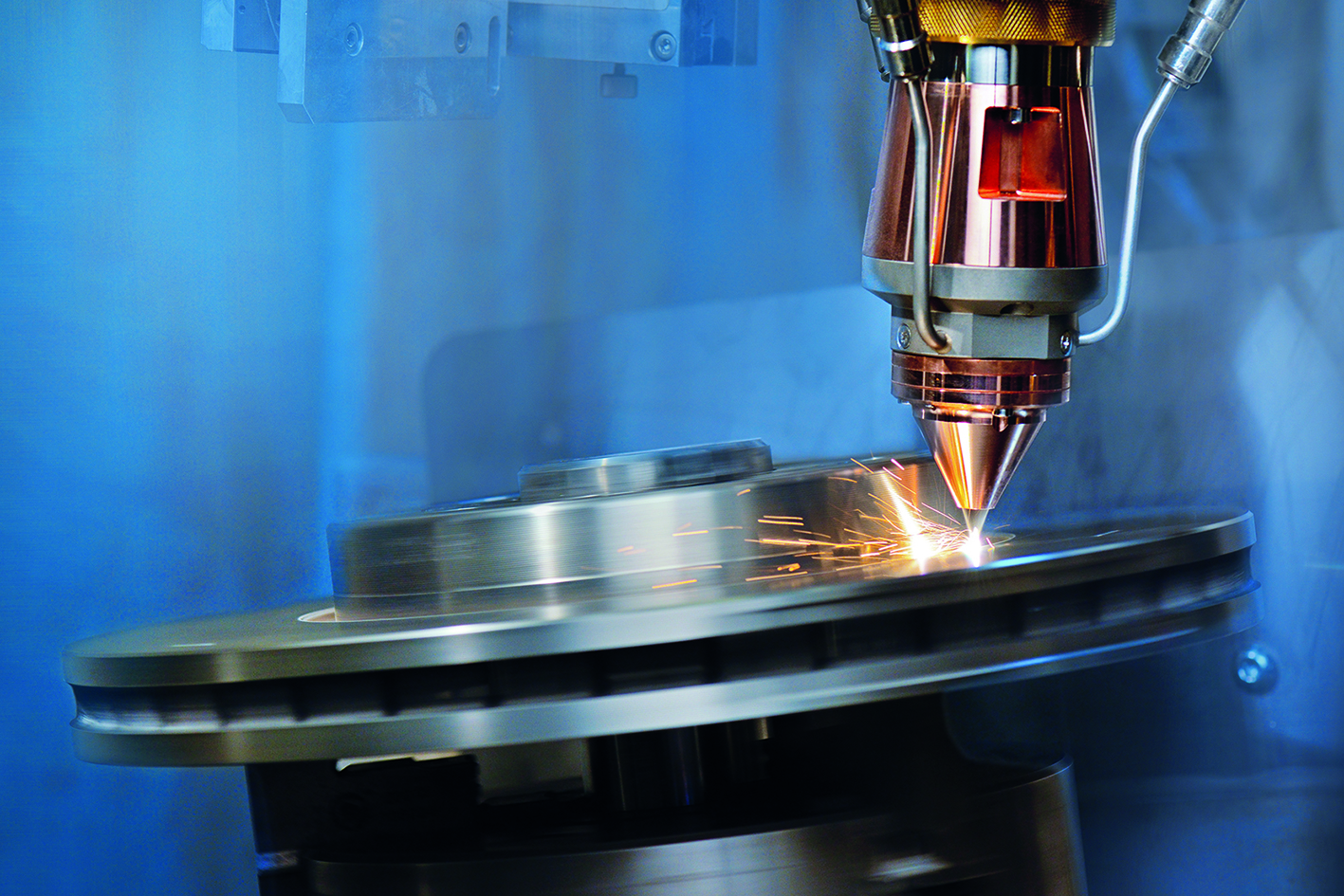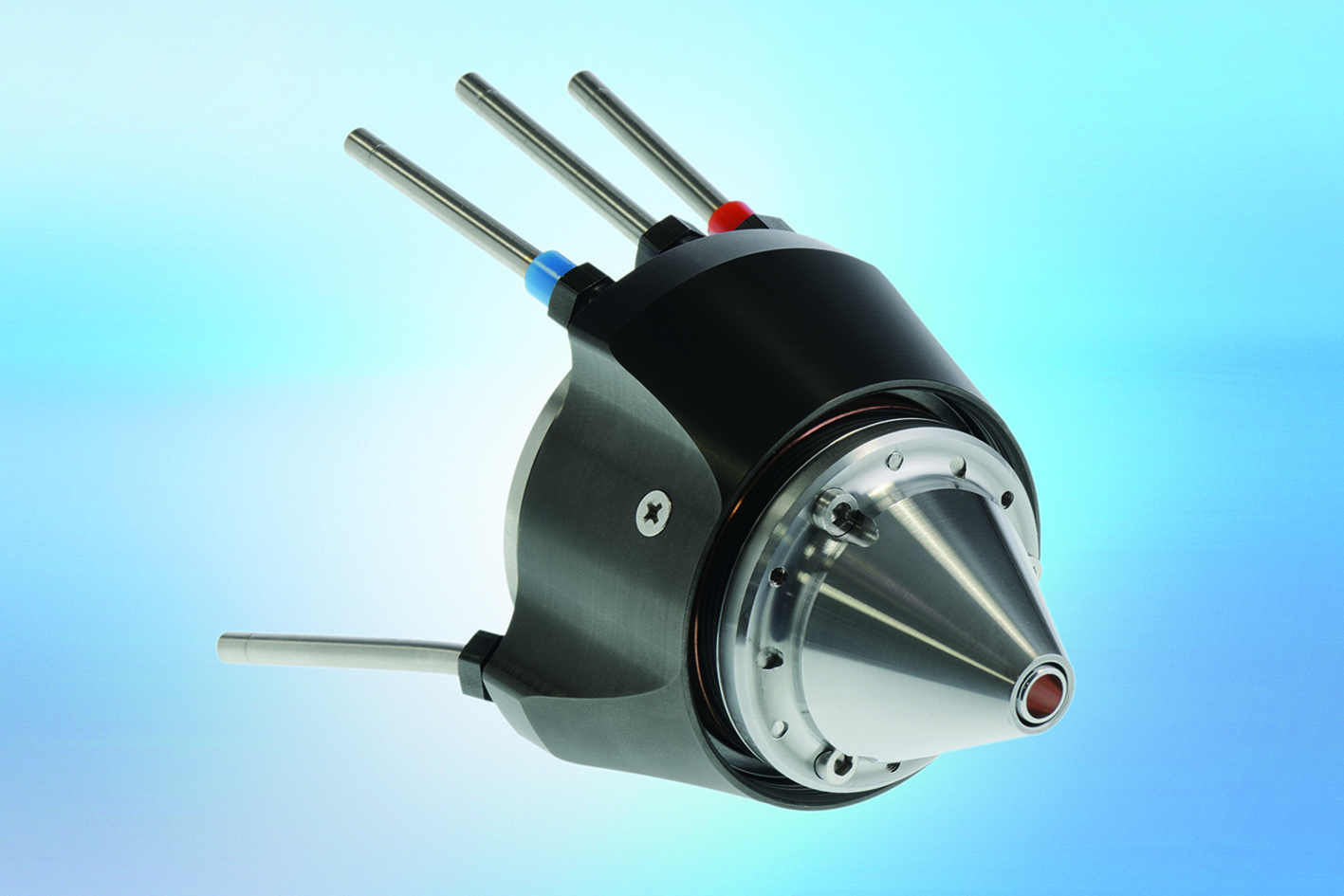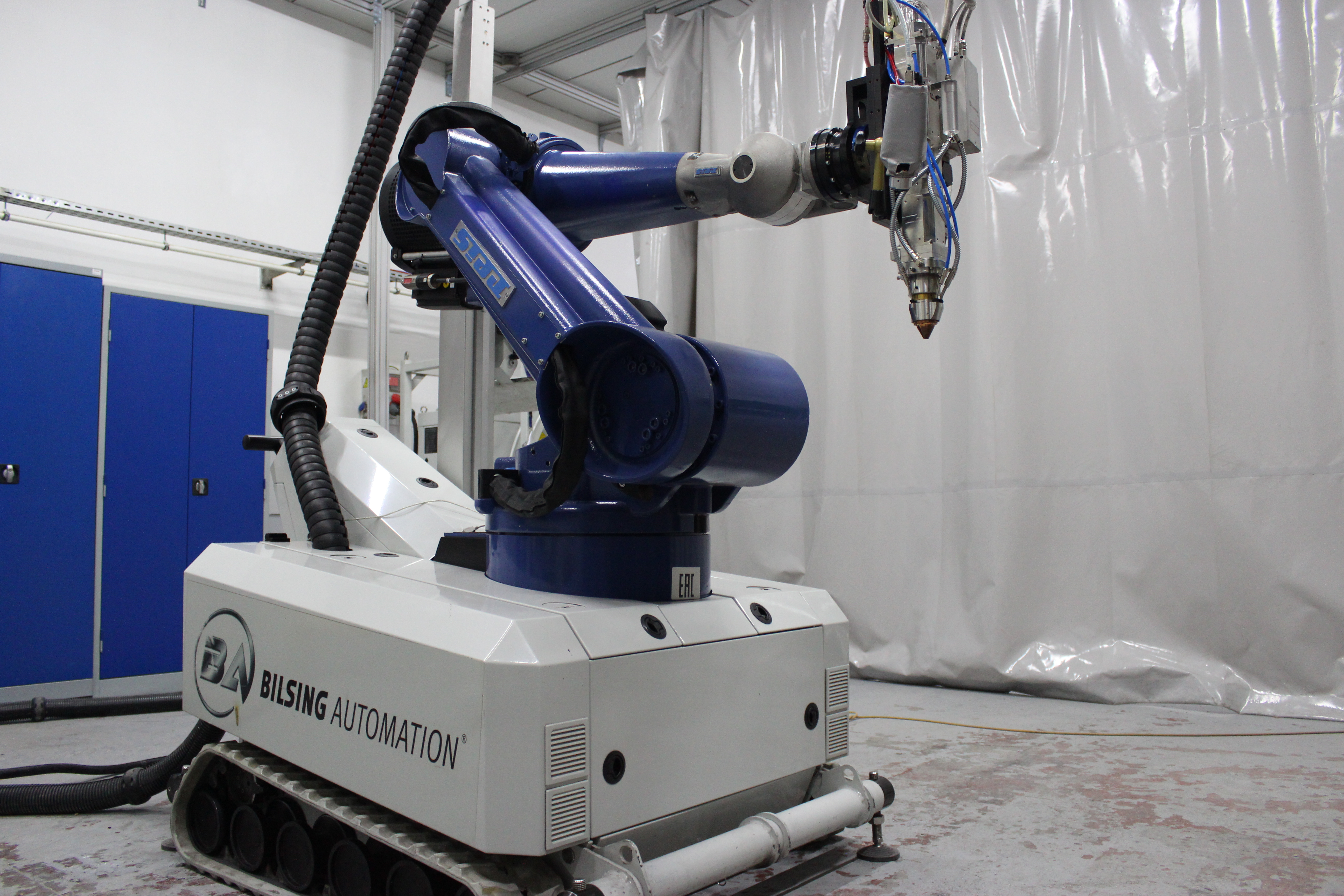The Turkish division of gripper manufacturer Bilsing Automation has announced the implementation of DED 3D printing technology from the Fraunhofer Institute for Laser Technology (ILT) into its workflow. The advanced process, aptly named extreme high-speed Laser Material Deposition (LMD), is already being used by industrial partners in countries such as Germany, China, and the UK, with Turkey now making the latest addition.

Laser material deposition
LMD is a variant of direct energy deposition, whereby a nozzle feeds powder to an intersection point with a high power laser – in this case, up to 20kW. The laser melts the powder as it’s being deposited, fusing it the surface of the part directly below. Fraunhofer ILT has been working on its own version of this since 2012 and has managed to achieve layers as thin as 25 microns with speeds of up to 8m/s.
The Institute’s machine also has an element of modularity to it, as the nozzle can be swapped out for a more lateral one or a more coaxial one, depending on the type of powder feed required for the application. What really pushed Bilsing to adopt the technology, however, was the new HighNo (high-quality powder nozzle).
The HighNo was developed in collaboration with Harald Dicker, and directs a cone-shaped powder jet onto the workpiece at a very precise definable distance. It is made of a proven copper alloy and is capable of powder efficiencies of up to 95%. The inside of the nozzle features two distinct cones that guide the powder all the way to the tip. Users can adjust these cones to modify the powder flow of the nozzle, enabling customizability for applications that require it.

High precision grippers
Since opting for the technology, Bilsing has used LMD and the HighNo to produce a number of its proprietary products, including flexible grippers, handling devices, and forming tools. The company has also worked collaboratively with Fraunhofer to produce Ti64 aircraft components for Turkish Airlines, specifically repairing the O-rings found in landing gear.
Within its own facilities, Bilsing decided to mount the LMD processing head onto a mobile robot with tracks, making the whole thing resemble a miniature tank (complete with the deadly laser beam). It now roams the shop floor, aiding the production lines that need the additive boost.
Salih Ersungur, a Managing Director at Bilsing Automation, states: “The exchangeable nozzle tips of the new nozzle generation are fastened with three screws that can be loosened in order to then insert a different nozzle tip. The HighNo nozzle makes the process more reliable and faster and reduces set-up times. We strongly believe in it.”

Several companies in the additive marketspace have developed their own forms of DED 3D printing. Optomec, known for its LENS process, recently announced an advancement in the capabilities of its LENS metal 3D printers. The processing heads are now able to deposit any aluminum alloy, extending the range of possible applications in industries such as transportation and aerospace.
Last year, in Las Vegas, Additec also made its debut with the launch of the μPrinter – featuring the company’s own spin on laser metal deposition. The additive manufacturing system is a desktop machine, which is very unconventional for this type of technology. It also retails at around $90,000, making it one of the more cost-efficient metal 3D printers on the market.
Subscribe to the 3D Printing Industry newsletter for the latest news in additive manufacturing. You can also stay connected by following us on Twitter and liking us on Facebook.
Looking for a career in additive manufacturing? Visit 3D Printing Jobs for a selection of roles in the industry.
Featured image shows brake disc being coated via LMD. Photo via Fraunhofer ILT.


